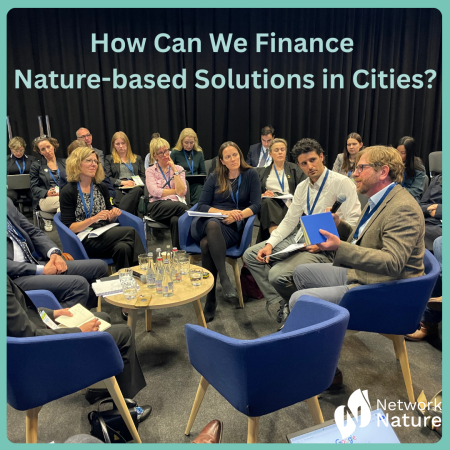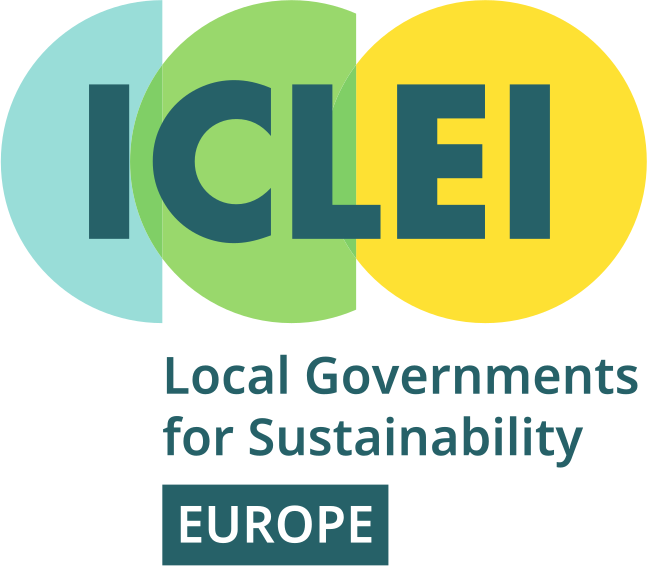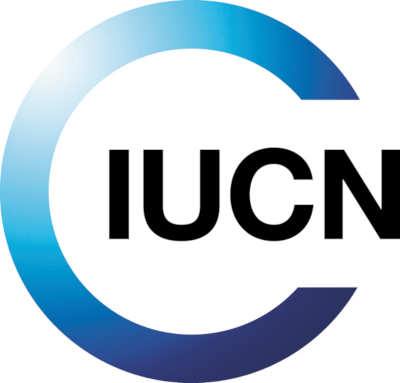
As biodiversity loss and climate change accelerate, cities are emerging as key players. When it comes to investing in nature-based solutions and climate action, both for mitigation and adaptation, one question consistently arises: Where will the funding come from? NetZeroCities and NetworkNature joined forces this week at the #CitiesMissionConference2025 to address this very question—connecting with finance experts, city representatives, and bringing up cases from EU projects such as UNP+, MERLIN, GoNaturePositive!, NAIAD, and Invest4Nature to debate how cities can redirect financial flows from grey to green infrastructure.
To understand the innovative nature of NbS, it is important to grasp how these interventions differ from ecosystem services and ecosystem based approaches: Nature-based solutions are not only defined by their co-benefits for human well-being, but also by their contributions to ecological resilience and biodiversity. If there is no net gain for biodiversity, an initiative may be inspired by nature—but it is not a nature-based solution.
EU policies such as the Green Deal and Nature Restoration Regulation have identified NbS as pragmatic and beautiful tools for climate and biodiversity action. In particular, Article 8 of the Nature Restoration Regulation mandates no net loss of urban green areas and tree canopy by 2030. This trend is not limited to Europe. NbS align local priorities globally with the Rio Conventions (UNFCCC, CBD, UNCCD). At the same time, there is a huge funding gap: €200 billion additional euros per year (see Target 19 of the Kunming-Montreal Global Biodiversity Framework, KMGBF) would be required just to fulfill the commitments of the Rio Conventions.
It couldn’t be more clear: private sector involvement is critical. Despite this, only 4% of EU projects include private finance in their funding schemes. Rodrigo Cassola (UNEP-WCMC) of NetworkNature shared with session participants the role of Horizon projects in addressing these gaps: “Some of the Horizon projects, including NetworkNature, are looking into how we generate value and enable institutional frameworks.” An entire EU Task Force on Finance and Business Models (for NbS) in a Nature-Positive Economy is also contributing to the nature-positive economy agenda, generating joint outputs across NbS projects, with an upcoming European Commission Expert Publication on NbS financing in the pipeline.
Projects like NAIAD, MERLIN, and Invest4Nature also offer replicable models for cities:
- NAIAD: Explores the insurance value of NbS, with a database of pilot-tested strategies. The project worked with avoided costs related to natural hazards and demonstrated how this concept can be applied in pilot cities such as Copenhagen, Rotterdam, and Łódź. A related project, NATURANCE, investigates innovative finance and insurance models that support the integration of NbS into risk management and investment planning.
- MERLIN: Implements 17 demonstration sites across Europe, focusing on freshwater ecosystem restoration. The project integrates financing tools and outcomes, exploring models for private investment alongside public funding. MERLIN also facilitates stakeholder engagement through its Marketplace platform, connecting restoration actors and brokering financing opportunities.
- Invest4Nature: Develops a comprehensive framework for evaluating the economic and financial performance of NbS. The project conducts cost-benefit analyses and explores business models to enhance the bankability of NbS. Through its Living Labs in Norway, Denmark, Poland, Austria, and Portugal, Invest4Nature provides practical examples and tools to support investment decisions in NbS.
To support cross policy, sectoral and departmental alignment at the city level, Urban Nature Plans—a planning framework co-developed by ICLEI and Eurocities with dozens of European cities for the European Commission—help mainstream nature as a key priority across city planning and investments. The EU Biodiversity Strategy for 2030 calls on cities with over 20,000 inhabitants to develop such plans which are being piloted and tested within the EU Horizon project UrbanNaturePlansPLUS (UNP+).
Mission City Paris, a UNP+ lighthouse city, is leveraging NbS for example to adapt to heatwaves. The city is pioneering innovative financing by applying their national carbon credit scheme based on Article 6.4 of the Paris Agreement. The city has created a high-integrity carbon label for local carbon removal projects to spur local impact and initiative blended finance to scale such efforts. A public-private company was formed that enables local corporate investments in NbS. The city is also developing metrics to capture co-benefits like biodiversity conservation.
“We cannot do everything with the budget of the city.” – Cécile Bordier, City of Paris
Not all cities have the same priorities. Just as NbS are not copy-paste solutions, neither are the strategies for mobilising finance. A participant from Lithuania voiced concern about shifting national priorities: “[We're] putting money in defense. What happens to all other projects like nature and green finance?” In response, Allison Lobb (BwB) suggested “What are you protecting at the end of the day? Defense must include resilience as an environmental concern.” There is a clear need to consider how cities and other levels of government might embed environmental resilience into broader policy priorities, not treat it as separate.
Mission Cities are at the forefront of this work, and need enabling policy and resources if they are to scale their work, replicate successes, and integrate NbS into their initiatives. Collaboration with the private sector is essential, not only to expand investment, but also to accelerate the implementation of NbS.
To make use of such resources, cities must understand how the financial sector views nature investments. Allison Lobb spoke on behalf of the Climate City Capital Hub, an initiative of NetZeroCities, explaining how the finance industry is beginning to view nature as an “asset class”—something measurable, scarce, and able to generate returns. Markets are emerging for soil, biodiversity, and pollination credits, and nature-linked KPIs are beginning to make sustainability bonds more attractive: “The moment you measure something, it can be tracked and it can be traded.” Wojciech Deska (EIB) offered additional practical advice: private investors tend to favour tested models and seek track records that build credibility. Cities need to show delivery capacity to attract financing. While the EIB cannot fund non-bankable projects, it has supported urban NbS through mechanisms like the Natural Capital Financing Facility (NCFF), combining technical assistance and capital support. Unlocking greater investment will require structural changes, stronger incentives, and co-financing mechanisms that align public and private benefits.
“Policy and regulation are needed to encourage and help scale the industry up. As much as investors want to do good for the environment, they sometimes need support. There is no doubt, blended finance is the way forward. It is all about doing better for everybody.” – Allison Lobb
Participants left the session not only with an overview of the challenges and enablers cities face when trying to mobilise investment for NbS, but with a wide range of resources for doing so. Examples include the European Investment Bank’s (EIB) offer of technical assistance and co-financing tools. NetworkNature, the one-stop-shop for NbS research and innovation, consolidates resources from NbS and Mission projects, including hundreds of case studies and research outputs.
The Cities Mission Conference featured another key session on innovative finance and climate adaptation, co-organised by ICLEI Europe and Bankers without Boundaries. Once again, Nature-based Solutions took centre stage, with speakers emphasizing the need to both foster and quantify their co-benefits across mitigation and adaptation efforts. Financing NbS is a crucial first step in bridging the Cities Mission and the Adaptation Mission. By generating clear, measurable co-benefits, these solutions can empower local and regional governments to accelerate their transition toward climate neutrality and resilience, ensuring funds allocated are an investment for future development.
NbS finance is still a developing field, but a few things are clear:
- The need to scale NbS is indispensable in achieving climate targets under any scenario.
- Collaboration across cities, EU initiatives, and other actors - for example through ICLEI Europe - is essential for knowledge exchange and synergies.
- We must pilot tools, share learnings, and highlight success stories of innovative financing mechanisms for NbS, as demonstrated by the cooperation between NetZeroCities and NetworkNature
- To scale nature-based climate solutions for cities, diverse financing mechanisms, robust social and environmental safeguards, clear metrics, and long-term planning are needed
- Trust, track record, and measurable returns are key to attracting private capital.
- Emphasising co-benefits across both mitigation and adaptation can strengthen the case for investment and increase stakeholder buy-in.
Stay tuned for the upcoming GoNaturePositive! policy briefs to learn more, which will publish sectoral insights on shifting towards a nature-positive economy across food systems, forestry, tourism, cities, and the blue economy!











